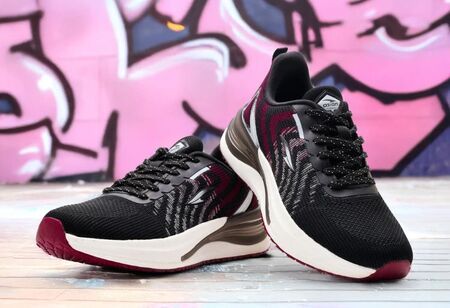
Finding the Right Gym Shoes: A Complete Guide


You need the right footwear for your workout since it makes a huge difference in terms of performance and comfort. Proper support matters whether you are lifting weights, running on the treadmill, or taking your fitness class. With the wrong pair, you will likely face discomfort, poor form, and even injuries.
This guide explores the main features you should look for when buying your next pair of gym shoes.
Why Gym Shoes Matter
Support for your feet matters during exercise. Your feet absorb impact, provide balance, and help you move in different directions. However, regular trainers or casual shoes will not suffice for a gym environment. You need proper gym shoes that offer cushioning, stability, and grip. Every day footwear simply cannot match it.
You will notice the difference immediately when wearing the right shoes. While your feet will feel more comfortable, your ankle will also have the right support. It means you can push harder without worrying about slipping or losing balance. Good footwear is a valuable investment in your fitness journey.
Key Features to Consider
Not all gym shoes are created equal. Here are the main features you should think about when making your choice.
Grip and Traction
High-grip athletic shoes for boys and men are essential for safety in the gym. You need solid traction on different surfaces. Gym floors can be slippery, especially in high-traffic areas. A good rubber sole with the right pattern will keep you steady during lateral movements, jumps, and quick direction changes.
Cushioning and Support
The amount of cushioning you need depends on your activities. If you do a lot of running or jumping, you'll want more padding to absorb shock. For weightlifting, you might prefer a flatter, more stable base. Mens training and workout shoes often come with different cushioning options to suit various exercise types.
Durability
Durable gym shoes for daily wear are a must if you train regularly. Check the quality of the materials as well as the stitching. The sole should be thick enough to withstand repeated use. Reinforced toe caps can prevent early wear and tear. While you might pay more upfront for quality shoes, they'll last longer and provide better value.
Breathability
Your feet will sweat during workouts. Shoes with mesh panels or breathable materials help keep your feet cool and dry. This reduces the risk of blisters and keeps your feet more comfortable during longer sessions.
Fit and Comfort
Proper fit is crucial. Your shoes should feel snug but not tight. Just make sure there is some space between your longest toes and the end of the shoe. Also, ensure the heel doesn't slip when you walk. Try on the shoes with the socks you'll wear to the gym for the most accurate fit.
Different Activities Need Different Shoes
The best shoes for gym and sports depend on what you're actually doing. Someone who mainly runs will have different needs than someone who focuses on strength training.
For cardio activities like running or aerobics, you need flexibility and good shock absorption. The shoe must bend easily at the ball of the foot. Extra cushioning in the heel helps protect your joints from impact.
For weightlifting and strength training, stability matters more than cushioning. A flat, firm sole helps you maintain proper form. Too much cushioning can actually work against you when lifting heavy weights.
If you do a mix of activities, look for cross-training shoes. These offer a balance of cushioning and stability. They're versatile enough to handle most gym activities reasonably well.
Shopping for Young Athletes
Parents looking for sports shoes for boys should pay extra attention to fit and room for growth. Young feet grow quickly, but shoes that are too large can cause blisters and poor performance. It's worth checking the fit every few months.
Look for adjustable features like laces or straps that can accommodate slight changes in foot size. Durable materials are especially important for active youngsters who put their footwear through rigorous use.
How Long Should Gym Shoes Last?
Most gym shoes need replacing every six to twelve months with regular use. Signs that it's time for a new pair include worn-down soles, reduced cushioning, or the shoe leaning to one side when placed on a flat surface.
If you train five or more times a week, you might need to replace your shoes more frequently. Having two pairs and rotating them can extend their lifespan. This gives each pair time to decompress and air out between sessions.
Making the Right Choice
Do not rush into making a decision when you are buying gym shoes. Instead, you must take your time to try different options. If possible, try with a few squats or light movements. Think about the specific activities you do most often and your needs.
Note that the most expensive option is not always the best for you. Besides selecting shoes that fit well and provide the right support for your activities, focus on finding shoes within your budget. The right pair will lead to higher comfort and better performance. You will be able to enjoy your workouts more.
Your gym shoes are among your most important fitness equipment. So, you must select them wisely and they will support you through countless workouts and help you achieve your fitness goals.